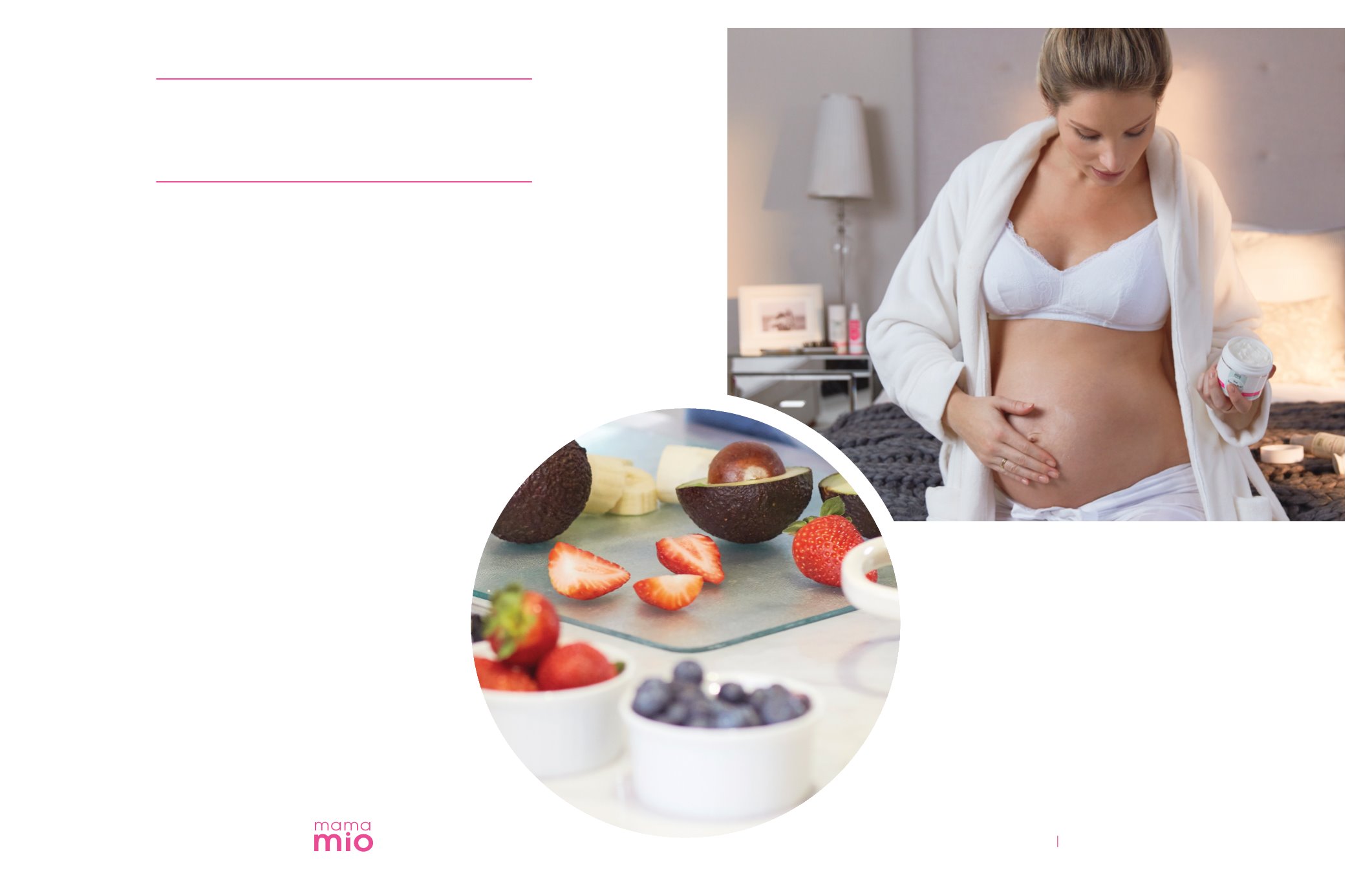

BODY CARE
45
I understand that my skin needs to
stretch, but how can I avoid stretch
marks during pregnancy?
There are some pretty amazing stunts going on inside your body
during pregnancy, and your skin is bound to show some badges of
honour in the form of stretch marks. These unwelcome scars are a
natural occurrence that take place when your body is growing so
rapidly that your skin is forced to play a game of catch up. During
pregnancy, the body is expanding so quickly that the skin never
has a chance to properly adjust and as a result, the elastin fibers
located right under the skin’s surface tear and cause stretch
marks. Hormones are also thought to play a role in the formation
of stretch marks during pregnancy. Some pregnancy hormones
can deprive the skin of some of its collagen, which is essential
for keeping the skin stretchy. Less stretch equals a higher
likelihood of tearing.
Another stretch mark culprit is the lack of essential
vitamins in your body to help support healthy
skin. Your baby, smart little thing that it is, knows
that it needs vitamins and minerals to develop,
so if it’s not getting enough through your diet,
it’ll start stealing the ones stored in your body.
Vitamins A, C, E as well as omega fatty acids,
help support a healthy skin structure and if your
diet is lacking in the proper amount of these
nutrients, the baby could be dipping into your
reserves. All of this makes it even easier for stretch
marks to form.
The two most common areas for stretch marks
during pregnancy are the belly and boobs, i.e.
the two places that are undergoing the most
growth. Other areas that are not impervious to
stretch marks are the thighs, upper arms and the
bum. The first sign that you’re getting a stretch
mark is an itchy feeling accompanied by the
formation of pink lines. The key is to take care of
your skin before you start to feel that itchiness, with
regular massage using a super-powered moisturiser.











